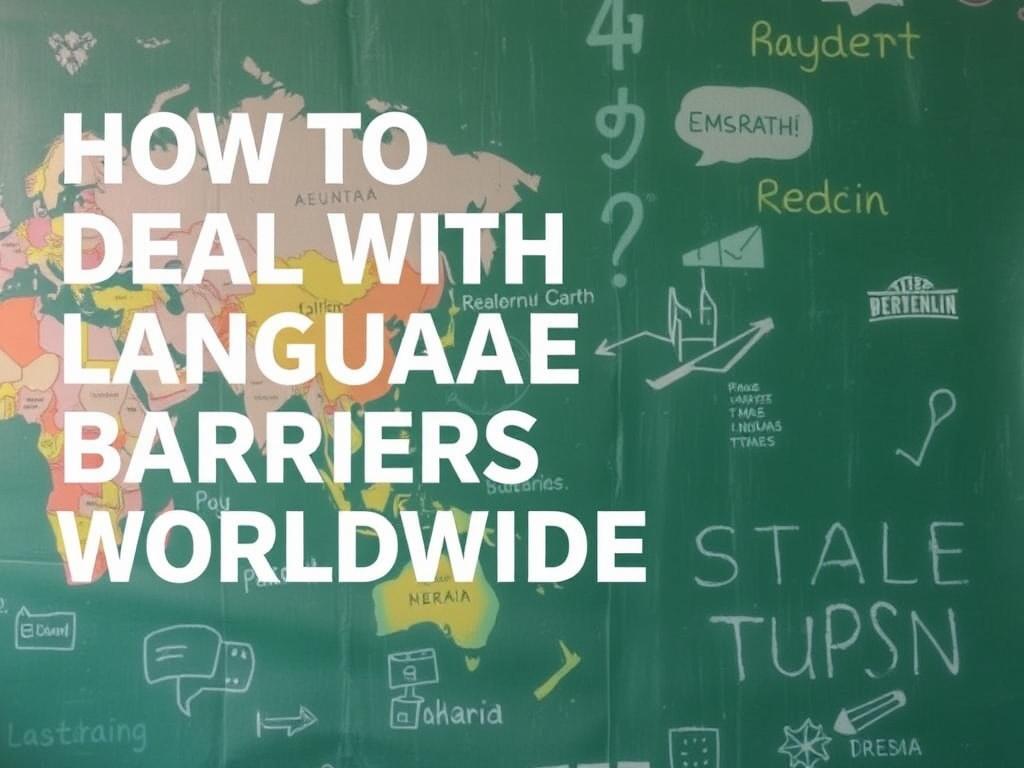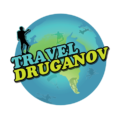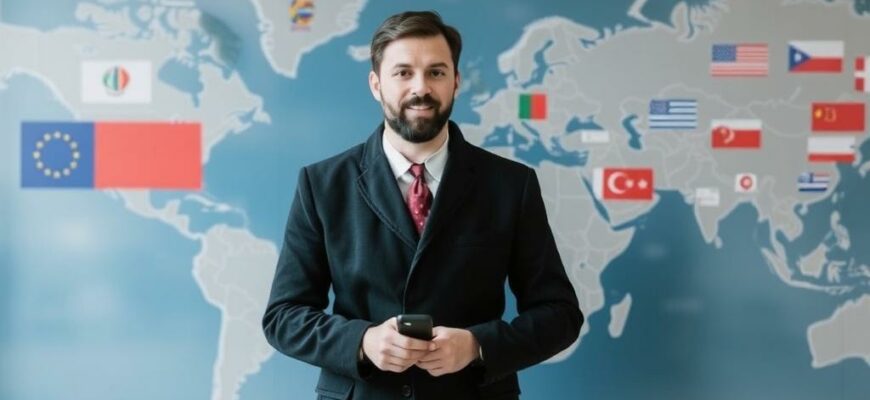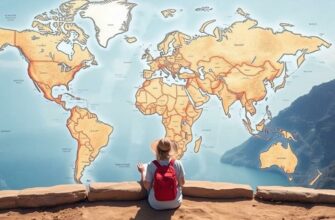Traveling, working, or even making friends across different countries can be a thrilling experience. However, one challenge that almost everyone faces at some point is the language barrier. Navigating conversations, professional meetings, or even simple daily tasks can become frustrating when you don’t share a common language with the people around you. But don’t worry! Learning how to deal with language barriers worldwide is entirely possible with the right strategies and mindset.
Language barriers can sometimes feel like a wall preventing effective communication and connection. Yet, with globalization, crossing these walls has become increasingly common, and there are many practical solutions to make interactions smoother and more effective. Whether you’re a traveler, an expatriate, a business professional, or a student, overcoming language barriers worldwide is about being resourceful, patient, and open-minded.
Understanding Language Barriers and Why They Matter

Before jumping into tips, it’s important to understand what language barriers really are. At its core, a language barrier exists when people cannot communicate effectively because they speak different languages or have different levels of proficiency. But the challenge extends beyond just words. Accent, dialects, cultural nuances, slang, and even non-verbal communication all play roles in the difficulties individuals face when trying to understand each other.
Language barriers worldwide can influence social connections, workplace efficiency, educational success, and access to necessary services. Imagine a doctor unable to explain a diagnosis clearly to a patient, or a traveler struggling to order food or ask for directions in a foreign country. Recognizing these challenges is the first step toward overcoming them.
Common Situations Where Language Barriers Occur
Language barriers do not discriminate and can appear in various contexts. Here are some of the most common scenarios:
- Travel and Tourism: Communicating with locals to navigate, order meals, or seek assistance.
- International Business: Negotiating deals, participating in meetings, or collaborating with partners from different countries.
- Education: Students struggling to understand lectures or instructions in a non-native language.
- Healthcare: Patients and medical staff trying to communicate about symptoms and treatments.
- Immigration and Settlement: Newcomers adjusting to life in a country with a different primary language.
Each of these situations demands patience and effective strategies to bridge the communication gap.
Strategies to Overcome Language Barriers Worldwide

Now that we understand the significance of language barriers, let’s explore some practical ways to tackle them. These strategies can apply whether you’re dealing with colleagues, strangers, friends, or service providers.
Learn Basic Phrases Before You Go
If you’re traveling or moving to a new country, investing time in learning basic phrases of the local language pays off significantly. Greetings, polite expressions, common questions, and essential words related to food, directions, and emergencies can help immensely.
Try to learn:
- Hello, Goodbye, Please, Thank you
- Numbers and prices
- How to ask for help
- Basic directional phrases
- Common food items and dietary restrictions
Even a small vocabulary can open doors and foster goodwill among locals, making interactions more pleasant and less stressful.
Use Technology to Your Advantage
In today’s digital age, technology is a language learner’s best friend. Translation apps like Google Translate, Microsoft Translator, or even specialized devices can help break down communication barriers quickly and efficiently. Many apps offer voice translation, image recognition (so you can translate menus, signs, or documents), and even offline modes for areas with poor internet connectivity.
Here’s a quick comparison table highlighting popular translation tools:
| App | Features | Pros | Cons |
|---|---|---|---|
| Google Translate | Text, voice, and image translation; offline mode | Free and widely available; supports many languages | Sometimes inaccurate translations; slang can be missed |
| Microsoft Translator | Multi-device conversation, text and voice translation | Good for group conversations; free | Limited language options compared to Google |
| iTranslate | Text, voice translations, offline mode | User-friendly interface; good pronunciation aids | Free version is limited; requires subscription for full features |
By combining technology with human intuition, you can successfully navigate tricky linguistic situations worldwide.
Non-Verbal Communication: The Universal Language
Sometimes words aren’t necessary when you know how to effectively use body language, gestures, facial expressions, and tone of voice. Non-verbal communication is very powerful in overcoming language barriers worldwide, but always be mindful that gestures can have different meanings in different cultures.
For example:
- Smiling is almost universally understood as a friendly gesture.
- Pointing with an open hand is more polite than using a finger in many countries.
- Nodding can mean ‘yes’ in most cultures but means ‘no’ in some places like Bulgaria and Turkey.
Learning culturally appropriate non-verbal cues can tremendously ease communication and avoid misunderstandings.
Be Patient and Practice Active Listening
If you are struggling to understand someone or vice versa, patience is your best ally. Give the other person time to express themselves without rushing or interrupting. Active listening involves paying close attention, confirming understanding by paraphrasing, and using gestures to show you’re engaged.
Here are some active listening tips:
- Maintain eye contact without staring.
- Avoid interrupting when the other person is speaking.
- Repeat or paraphrase to ensure understanding.
- Ask open-ended questions to encourage dialogue.
Patience and empathy go a long way in breaking down the language barrier and establishing trust.
Use Visual Aids and Written Communication
When words fail, visuals often come to the rescue. Maps, pictures, diagrams, and written notes can clarify meaning and reduce confusion, especially in technical or professional settings.
For example:
- Healthcare providers can use pictograms to explain medication instructions.
- Business meetings might rely on charts and graphs to convey data clearly.
- Travelers can show images of hotel rooms, meals, or transport options to confirm preferences.
Also, when in doubt, writing down key words or important details can be beneficial, as reading allows people to process information at their own pace.
Learning a New Language: Long-Term Solutions for Language Barriers Worldwide
While short-term hacks help in specific situations, learning a new language is the most effective way to permanently overcome language barriers. It may seem daunting at first, but with consistent practice and the right mindset, anyone can make progress.
Set Realistic Goals and Practice Regularly
Language learning requires dedication but doesn’t have to be overwhelming. Start with small, achievable goals such as learning greetings or essential vocabulary weekly. Use language apps like Duolingo, Babbel, or Rosetta Stone for structured lessons, and try to practice every day—even a few minutes counts.
Immerse Yourself in the Language
Immersion is key to language acquisition. Surround yourself with the language by listening to local music, watching TV shows or movies, joining language exchange groups, or even speaking with native speakers online. Language immersion helps you get used to pronunciation, rhythm, and colloquial expressions.
Don’t Fear Making Mistakes
One of the biggest obstacles in learning and using a new language is fear of making mistakes. Remember, making errors is part of the learning process. People usually appreciate the effort more than perfection and are often willing to help you improve.
Language Barriers in the Workplace: Navigating Challenges
For many professionals, the workplace is a melting pot of diverse cultures and languages. Dealing with language barriers worldwide in this setting requires special attention because miscommunication can affect productivity and teamwork.
Implement Language Training Programs
Organizations can support employees by offering language training or workshops tailored to workplace communication. Learning phrases related to your industry not only boosts confidence but also reduces misunderstandings.
Promote Clear and Simple Communication
Using simple sentences, avoiding jargon, and speaking slowly but naturally can make communication easier. Encourage team members to confirm understanding by summarizing points during meetings.
Use Multilingual Materials
Providing documents, manuals, and training materials in multiple languages ensures everyone gets the same information accurately. Visual materials and infographics also help reinforce messages.
Dealing with Language Barriers in Healthcare Settings
Perhaps one of the most critical areas impacted by language barriers worldwide is healthcare. Clear communication can literally be a matter of life or death.
Hire Professional Interpreters
When possible, healthcare institutions should provide professional interpreters to assist in medical appointments, ensuring accurate communication between patients and providers.
Utilize Translation Technology
Mobile apps and devices for real-time interpretation can complement human interpreters, especially during emergencies or in remote areas.
Train Healthcare Workers in Cultural Competence
Understanding cultural differences, including language-related issues, enables healthcare providers to offer more compassionate and effective care.
Tips for Travelers Facing Language Barriers Worldwide
Traveling to a country where you do not speak the language can be intimidating. But it can also be one of the most rewarding experiences if you prepare well.
Carry a Phrasebook or Translation App
Always have a physical or digital resource handy for quick reference. Phrasebooks often contain useful survival phrases tailored to travelers.
Learn Cultural Etiquette
Respecting local customs, gestures, and communication styles can compensate for linguistic shortcomings and create goodwill.
Ask Locals for Help
Most people appreciate when visitors make an effort to communicate. Don’t hesitate to ask for assistance or clarification.
Language Barriers in Education: Supporting Students Worldwide
Students learning in non-native languages can feel isolated or frustrated. Recognizing and overcoming language barriers worldwide in education requires both institutional and individual efforts.
Provide Language Support Programs
Many schools and universities offer language labs, tutoring, or extra classes to help students improve proficiency.
Create Inclusive Learning Environments
Teachers can use visual aids, simplified language, and interactive activities to make learning accessible.
Encourage Peer Support
Group projects and peer tutoring can foster collaboration and language practice, helping students build confidence.
Summary Table: Quick Tips to Deal With Language Barriers Worldwide

| Tip | Description | Best For |
|---|---|---|
| Learn Basic Phrases | Familiarize yourself with essential words and expressions | Travelers, New Residents |
| Use Translation Technology | Leverage apps and devices to facilitate communication | Everyone |
| Non-Verbal Communication | Use gestures, facial expressions, and body language | Travelers, Business, Healthcare |
| Be Patient and Listen | Practice active listening and allow time to express | All Settings |
| Visual Aids | Include images, diagrams, and written notes to clarify | Education, Healthcare, Business |
| Language Learning | Invest long-term effort into learning the language | Expats, Frequent Travelers, Professionals |
How Cultural Awareness Enhances Overcoming Language Barriers
Language and culture go hand in hand. Appreciating the cultural context not only enriches your understanding of a language but also prevents misunderstandings.
For instance, humor, idioms, and expressions often don’t translate literally. Being aware of these differences allows us to communicate more sensitively and effectively.
Take time to learn about the local customs, values, and societal norms when interacting across languages. This cultural insight builds bridges beyond words and fosters genuine connection.
Final Thoughts and Encouragement
Dealing with language barriers worldwide is an inevitable part of our increasingly connected global society, but it doesn’t have to be a roadblock. Instead, it can be an opportunity to learn, grow, and bridge cultural divides. Whether you’re using technology, learning new words, embracing patience, or diving deep into language study, every effort you make reduces the gap and increases understanding.
Remember, communication is more than just words — it’s about connection, trust, and empathy. So, take on language barriers as challenges you can creatively and compassionately overcome and let the world become a little smaller and friendlier with every interaction.
Conclusion
In facing language barriers worldwide, the key lies not only in tools and techniques but in attitude. By learning basic phrases, using technology wisely, embracing non-verbal cues, practicing patience, and continuously striving to understand and be understood, we can dismantle the walls that languages sometimes build between us. Whether traveling to new lands, navigating multicultural workplaces, or learning in foreign environments, the ability to adapt and connect transcends language itself. With cultural awareness and an open mind, language barriers become invitations to explore, engage, and enrich our experiences around the globe. Remember, every effort toward communication opens the door to new friendships, opportunities, and shared human understanding.









